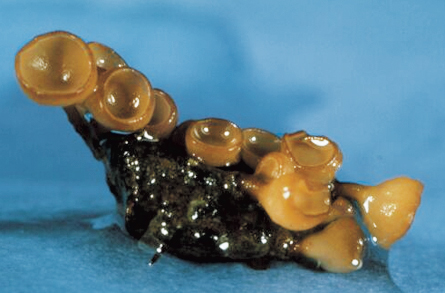- More than 2 years ago

Fungi don’t need a weatherman to know which way the wind blows. They make their own. Forcibly ejecting thousands of spores into still air creates a little puff that can carry the fungal offspring 20 times farther than a single spore travels alone, researchers report online the week of September 27 in the Proceedings of the National Academy of Sciences. By working together to stir the air around them, the spores can dodge nearby obstacles such as leaves, reach other air currents, and ultimately land on real estate prime for infection.
Using high speed video, a team of researchers from Harvard, Cornell and the University of California, Berkeley, clocked the launch speed of spores of Sclerotinia sclerotiorum, an omnivorous fungus that attacks numerous plants. The spores initially blasted off at speeds near 20 miles per hour. But the distance they traveled depended on whether they launched alone or en masse. Spores sprung singly were quickly brought down by drag, traveling a mere 3 millimeters before decelerating to zero. But when the fungus ejected waves of spores in quick succession, it created currents that carried spores farther at a slow but steady pace of just over 1 mile per hour.
Modeling these fungal ballistics revealed that every spore doesn’t get to take full advantage of this group-generated gust. Spores that launch first set the air in motion, but don’t travel as far as their peers.
All for one from Science News on Vimeo.
When the fungus Sclerotinia launches its spores, the first ones to emerge (blue, on right) create a wind that carries subsequent spores (yellow) higher. The last spores to emerge (red) can fly as high as 20 centimeters, much farther than any single spore could go by itself.
Credit: Mahesh Bandi, Agnese Seminara/Harvard University and Marcus Roper/UC Berkeley







